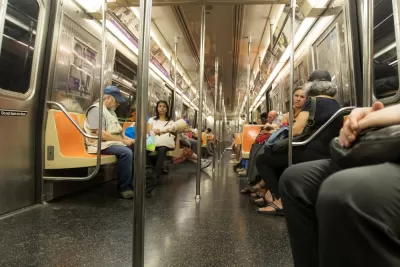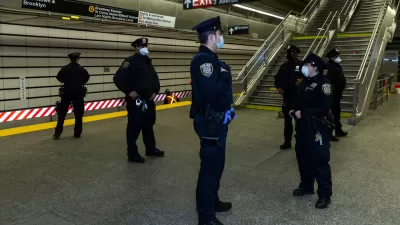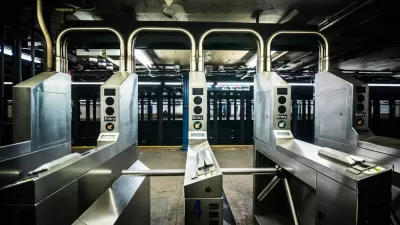According to federal data, the average number of safety incidents on public transportation averaged 55.2 per 100,000 people across all states between 2010 and 2023. Which states came in well above the national average?

Rider safety on public transportation has been a huge topic in the news of late, from bus and train collisions to transit agencies grappling with violence in stations and on vehicles. Property Casualty 360 reported recent data analysis by H&P law that ranked states according to safety risk to riders. The data, which came from the U.S. Bureau of Transportation Statistics, showed the average number of incidents (combined fatalities, collisions, and injuries) on transportation vehicles across all U.S. states was 55.2 per 100,00 people from 2010 to 2023.
According to the analysis, here are the 10 states where riders face the most risk:
- New York: 45,732 total incidents; 230.3 incidents per 100,000 residents; 317% above national average (NA)
- Illinois: 20,910 total incidents; 64.8 incidents per 100,000 residents; 198% above NA
- Delaware: 1,607 total incidents; 159.9 incidents per 100,000 residents; 189% above NA
- Pennsylvania: 17,725 total incidents; 136.2 incidents per 100,000 residents; 147% above NA
- Maryland: 7,448 total incidents; 120.6 incidents per 100,000 residents; 18.4% above NA
- Massachusetts: 7,749 total incidents; 110.8 incidents per 100,000 residents; 101% above NA
- b 9,221 total incidents; 99.5 incidents per 100,000 residents; 80% above NA
- Missouri: 5,463 total incidents; 88.5 incidents per 100,000 residents; 60% above NA
- Hawaii: 1,269 total incidents; 87.7 incidents per 100,000 residents; 59% above NA
- Connecticut: 3,138 total incidents; 87.1 incidents per 100,000 residents; 58% above NA
It’s an interesting data snapshot to be sure. However, the numbers don’t seem to reflect the fact that public transportation access and availability vary by state, even between states with comparable populations. Of course states with larger, more robust transit networks will have more transit-related incidents per capita than states with fewer and smaller transit offerings. Perhaps an analysis of incidents per 100,000 rides (rather than per 100,000 people) would paint a more accurate picture.
FULL STORY: These states have the most public transit incidents

Trump Administration Could Effectively End Housing Voucher Program
Federal officials are eyeing major cuts to the Section 8 program that helps millions of low-income households pay rent.

Planetizen Federal Action Tracker
A weekly monitor of how Trump’s orders and actions are impacting planners and planning in America.

The 120 Year Old Tiny Home Villages That Sheltered San Francisco’s Earthquake Refugees
More than a century ago, San Francisco mobilized to house thousands of residents displaced by the 1906 earthquake. Could their strategy offer a model for the present?

HSR Reaches Key Settlement in Northern California City
The state’s high-speed rail authority reached an agreement with Millbrae, a key city on the train’s proposed route to San Francisco.

Washington State Legislature Passes Parking Reform Bill
A bill that would limit parking requirements for new developments is headed to the governor’s desk.

Missouri Law Would Ban Protections for Housing Voucher Users
A state law seeks to overturn source-of-income discrimination bans passed by several Missouri cities.
Urban Design for Planners 1: Software Tools
This six-course series explores essential urban design concepts using open source software and equips planners with the tools they need to participate fully in the urban design process.
Planning for Universal Design
Learn the tools for implementing Universal Design in planning regulations.
Ada County Highway District
Clanton & Associates, Inc.
Jessamine County Fiscal Court
Institute for Housing and Urban Development Studies (IHS)
City of Grandview
Harvard GSD Executive Education
Toledo-Lucas County Plan Commissions
Salt Lake City
NYU Wagner Graduate School of Public Service





























